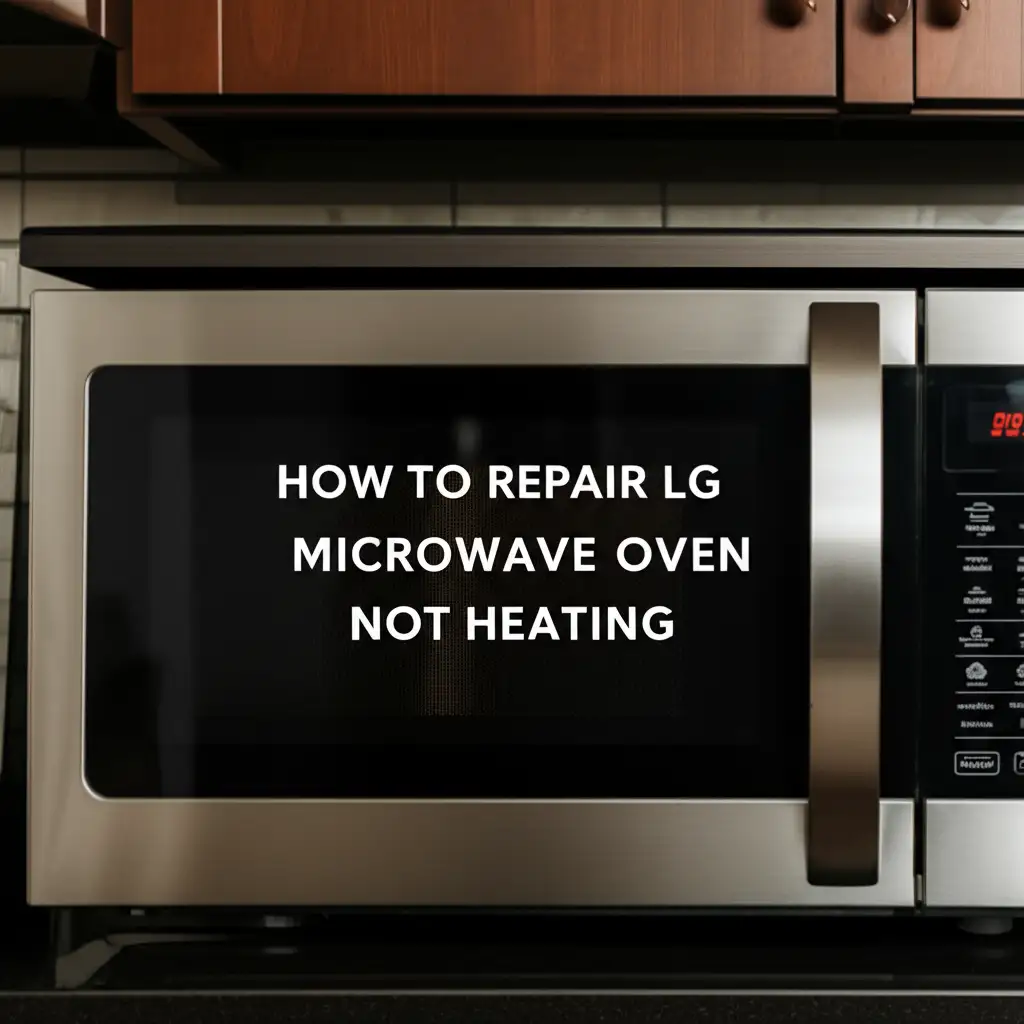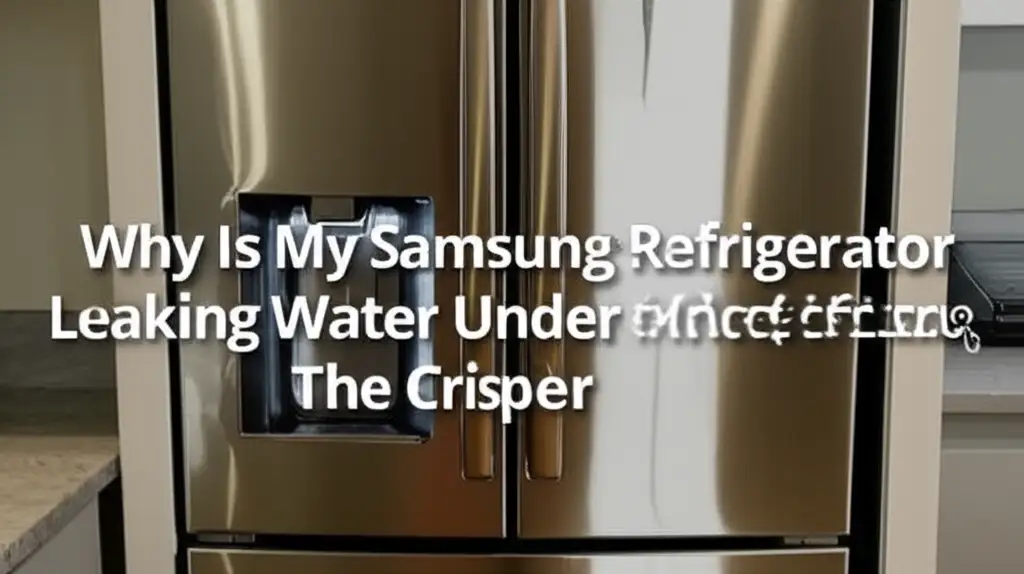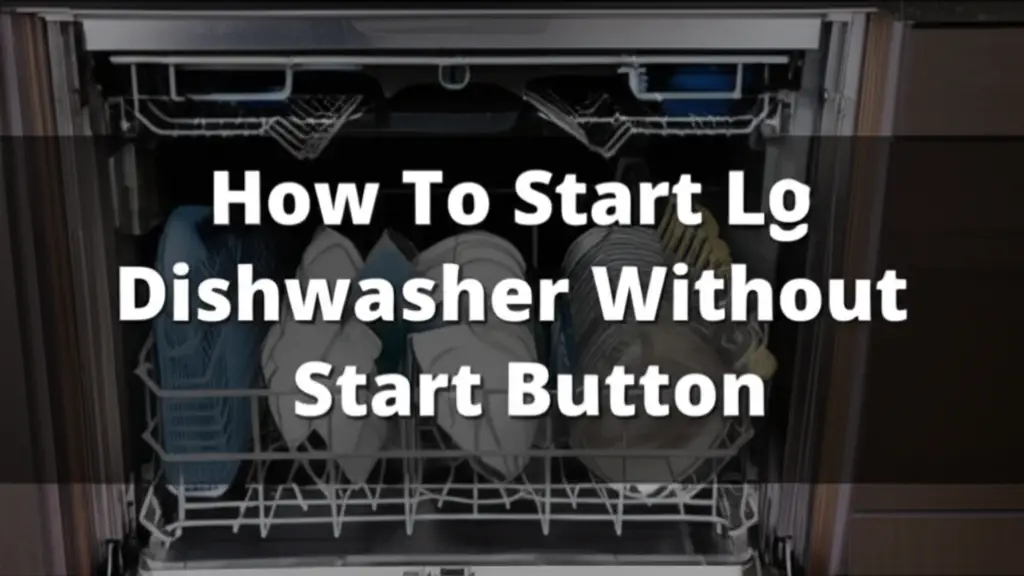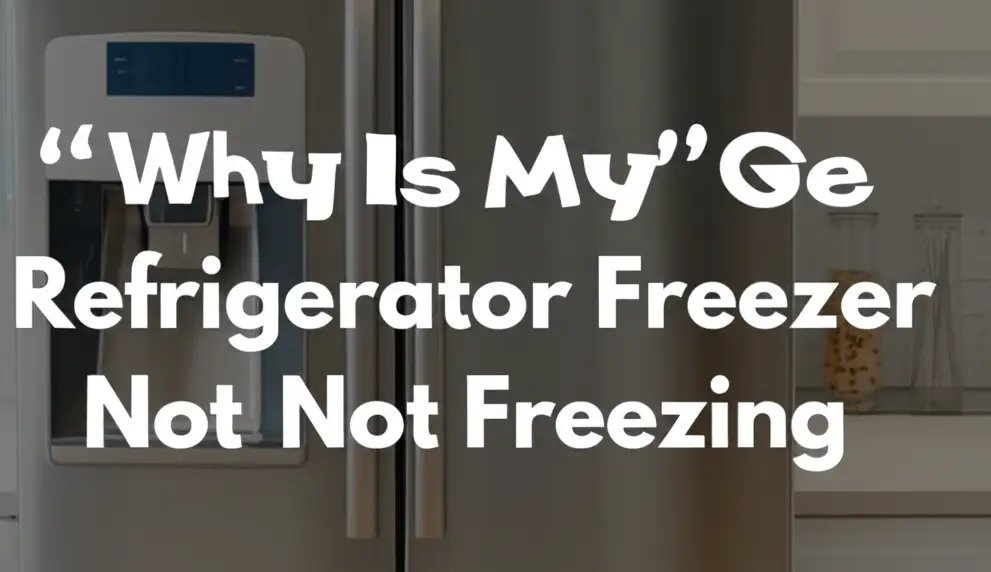· Katria Melrose · Home Appliances · 14 min read
Why Is My Ge Oven Not Heating The Correct Temperature

Solving Your GE Oven Temperature Issues
Finding your GE oven not heating the correct temperature can be frustrating. You plan a meal, preheat the oven, and then realize something is wrong. Food might burn, or it might cook too slowly. This issue often signals a faulty component inside your appliance. We understand your concern and are here to help you.
This guide explores the most common reasons your GE oven struggles with temperature. We will cover potential problems like faulty heating elements, temperature sensors, or igniters. You will learn how to identify these issues. We also provide clear steps for troubleshooting and potential fixes. Get ready to understand your GE oven better. We help you bring it back to proper working order.
Takeaway
- Check Heating Elements: Inspect both bake and broil elements for visible damage like breaks or blisters.
- Test Temperature Sensor: Use a multimeter to check the resistance of the oven’s temperature sensor.
- Examine Igniter (Gas Ovens): Watch if the igniter glows and ignites gas within 90 seconds in gas models.
- Inspect Door Seal: Look for gaps or damage around the oven door gasket that allows heat to escape.
- Consider Control Board: A malfunctioning control board can send incorrect signals to components.
- Calibrate Oven: If minor inaccuracies occur, try recalibrating your oven’s temperature.
Clear Answer
Your GE oven is not heating the correct temperature usually due to a faulty bake element, a malfunctioning temperature sensor, or a defective igniter in gas models. Other causes include a failing control board or a damaged door seal. Identifying the specific faulty part is the first step to restoring proper temperature.
Understanding Common GE Oven Heating Problems
Your GE oven is a key part of your kitchen. When it fails to heat properly, it disrupts your cooking. Many different issues can cause a GE oven to not heat the correct temperature. Some problems are easy to spot. Others require deeper investigation. Understanding these common problems helps you diagnose the issue accurately.
The most frequent culprits include heating elements and temperature sensors. In gas ovens, the igniter plays a crucial role. Electrical connections can also fail. Even a simple component like the oven door seal can impact performance. We will explore each of these possibilities in detail. Knowing where to start looking saves you time and effort. You can often fix these issues yourself with basic tools.
Why Your GE Oven May Not Heat Properly
Several components work together to maintain oven temperature. If any one part fails, the whole system suffers. For example, a heating element might burn out. The oven sensor might send incorrect readings. The main control board could malfunction. These failures directly affect how your oven heats. They prevent it from reaching or holding the desired temperature. Identifying the exact cause is important for a correct repair. You can save money by fixing it yourself.
Troubleshooting the Bake and Broil Elements
The bake and broil elements are essential for your GE oven’s heating. The bake element is usually at the bottom of the oven. The broil element sits at the top. Both elements turn red when they heat properly. If your GE oven is not heating the correct temperature, one of these elements could be faulty. Checking them is a straightforward process.
Start by visually inspecting both elements. Look for any visible signs of damage. This includes cracks, breaks, or blisters. A healthy element has a smooth, intact surface. If you see any damage, the element needs replacement. A faulty element will not heat up or will heat unevenly. This leads to temperature inconsistencies.
Inspecting for Element Damage
Open your oven door and let the oven cool completely. Gently pull out the oven racks for better visibility. Carefully examine the bake element at the bottom. Then, check the broil element at the top. Sometimes, an element might look fine but still be faulty. In such cases, you might need to test it with a multimeter. A multimeter checks for electrical continuity. If there is no continuity, the element is broken.
Replacing an element is a common DIY repair. Turn off the power to your oven at the circuit breaker first. Disconnect the wires from the old element. Then, remove any screws holding it in place. Install the new element and reconnect the wires. Always ensure you use an exact replacement part for your GE oven model. This ensures compatibility and safe operation. For more insights on this component, you might find information on how to clean oven heating element helpful, which can sometimes address minor performance issues or prepare for replacement.
The Role of the Temperature Sensor
The oven temperature sensor tells the control board how hot the oven is. It acts like the oven’s thermometer. This sensor is crucial for accurate temperature regulation. If your GE oven is not heating the correct temperature, a faulty sensor is a strong possibility. The sensor sends electrical resistance readings to the control board. The control board uses these readings to adjust heating.
A damaged or inaccurate sensor will give wrong temperature readings. This can cause the oven to overheat or underheat. Sometimes, the oven might not heat at all. You can usually find the temperature sensor inside the oven cavity. It is often a thin metal probe sticking out from the back wall. Testing this sensor requires a multimeter.
Testing and Replacing the Oven Sensor
Before testing, unplug your oven or turn off its power. Locate the temperature sensor inside the oven. Disconnect the sensor’s wires. Use a multimeter to measure the sensor’s resistance. Consult your GE oven’s service manual for the correct resistance values. These values vary with temperature. For instance, at room temperature, a sensor might read around 1080 ohms. If your sensor’s reading is far off, or shows no resistance (open circuit), it is faulty.
Replacing the sensor is often simple. Unscrew the mounting screws that hold the sensor in place. Pull the sensor out from the oven cavity. You may need to gently pull the wire through the back. Install the new sensor by reversing these steps. Ensure all connections are secure. A working temperature sensor helps your GE oven heat precisely. This ensures your food cooks perfectly every time. If you notice issues with other brands, similar sensor problems can affect models like a Wolf oven not heating up or a Whirlpool oven not getting up to temperature, indicating a common point of failure across various brands.
Issues with the Oven Igniter (Gas Models)
For GE gas ovens, the igniter is a critical component for heating. It does two jobs. First, it gets hot enough to ignite the gas flowing into the burner. Second, it acts as a safety device. It senses if the gas has ignited. If not, it signals the gas valve to shut off. If your GE oven is not heating the correct temperature and you have a gas model, the igniter is a common suspect.
A weak or failing igniter may not get hot enough to ignite the gas. The gas will flow but not light. This means no heat. Sometimes, the igniter glows but takes too long to ignite the gas. This can also lead to incomplete heating. You will notice the oven struggling to reach the set temperature. Or it might fail to heat at all.
How to Check the Igniter
To check the igniter, you need to observe its behavior. Turn on your gas oven to a bake setting. Listen for the click of the gas valve. Then, watch the igniter. It should begin to glow orange. A strong igniter glows brightly. It should ignite the gas within 30 to 90 seconds. If it glows faintly, or if it takes longer than 90 seconds to ignite the gas, it is likely weak. A weak igniter should be replaced. If the igniter does not glow at all, it is completely faulty.
Replacing a gas oven igniter involves working with gas lines. It is important to turn off the gas supply to the oven first. Also, unplug the oven from power. Access the igniter, usually located near the gas burner tube. Disconnect the wires and remove the old igniter. Install the new igniter carefully. Ensure all connections are tight. Turn the gas and power back on. Test the oven. Replacing the igniter can often resolve heating issues in gas GE ovens.
Control Board Malfunctions and Wiring Problems
The control board is the “brain” of your GE oven. It manages all oven functions, including temperature regulation. It receives input from the temperature sensor. It then sends signals to the heating elements or igniter. If your GE oven is not heating the correct temperature, a faulty control board could be the cause. This part can fail due to power surges, age, or manufacturing defects. A control board malfunction means incorrect signals get sent. This leads to improper heating cycles.
Wiring problems also contribute to heating issues. Loose, burnt, or corroded wires can interrupt electrical flow. This prevents components from receiving power. For example, a bad wire to the bake element means it won’t heat up. Inspecting wires for damage is important.
Diagnosing Control Board and Wiring Issues
Diagnosing a control board issue can be tricky. There are often no visible signs of damage. If you have checked all other components (elements, sensor, igniter) and they appear fine, the control board is a strong suspect. Look for error codes on your oven’s display. These codes can sometimes point to specific board failures. Resetting the oven by unplugging it for a few minutes might temporarily resolve minor glitches. If the problem persists, the board might need replacement.
For wiring, turn off the oven’s power completely. Carefully inspect all visible wires connected to the heating elements, temperature sensor, and control board. Look for discoloration, fraying, or loose connections. Secure any loose wires. Replace any damaged wires. If you are unsure about working with electrical components, it is best to consult a professional. Wiring issues can be dangerous if not handled correctly. A qualified technician can safely diagnose and repair these complex electrical problems.
Door Seal and Calibration Concerns
Your GE oven’s door seal is vital for maintaining temperature. The gasket around the oven door traps hot air inside. If this seal is worn, cracked, or loose, hot air escapes. This means your GE oven is not heating the correct temperature consistently. The oven will work harder to maintain heat, using more energy. Food will cook unevenly. You might notice longer cooking times.
Oven calibration is another factor. Ovens can sometimes be slightly off from the factory setting. Or they can drift over time. This means the temperature shown on the display is not the actual temperature inside the oven. A minor calibration adjustment can fix these small temperature discrepancies. This ensures precise cooking results.
Checking the Door Seal and Calibrating Your Oven
To check the door seal, close the oven door. Place a dollar bill half in and half out, then try to pull it out. If it pulls out easily, the seal is weak. You can also visually inspect the entire gasket for gaps, tears, or brittleness. A damaged door seal needs replacement. Replacing the seal is usually straightforward. You can often pull the old one off and push a new one into place. Ensuring a tight seal is crucial for efficient heating. You might also want to understand how to remove GE oven door without hinge latches if you need to replace the seal or access other components behind the door.
For calibration, you will need an accurate oven thermometer. Place it inside the oven. Set the oven to a specific temperature, like 350°F. Let it preheat for at least 20 minutes. Read the thermometer. If the thermometer shows a different temperature than the display, your oven needs calibration. Most GE ovens allow for a temperature offset adjustment. Check your oven’s user manual for specific instructions. Usually, you press a combination of buttons to enter a calibration mode. You can then adjust the temperature up or down in small increments. This fine-tunes your oven’s accuracy.
Other Less Common Causes and Professional Help
While heating elements, sensors, igniters, and control boards are the main culprits, other issues can cause a GE oven to not heat the correct temperature. These problems are less common but still possible. Understanding them helps in a complete diagnosis. Sometimes, a thermal fuse might blow. This fuse is a safety device. It cuts off power if the oven overheats. If it blows, the oven gets no power and won’t heat at all. Power supply issues can also prevent proper heating.
Before calling a professional, ensure your oven is receiving adequate power. Check the circuit breaker. A tripped breaker means no power. Resetting it might solve the problem. If the outlet itself is faulty, the oven won’t get enough electricity. A voltage test can confirm this. Remember to always prioritize safety. Disconnect power before checking electrical components.
When to Call a Professional
If you have performed basic troubleshooting and your GE oven still does not heat correctly, it is time for professional help. Certain repairs, like those involving complex wiring or the control board, require expertise. A qualified appliance technician has specialized tools and knowledge. They can quickly diagnose complex issues. They also have access to genuine replacement parts. Attempting repairs beyond your skill level can be dangerous. It might also cause further damage to your appliance.
A technician can also perform comprehensive diagnostics. They can check components like relays and wiring harnesses that are harder to access. They ensure your oven operates safely and efficiently. Investing in professional repair can extend the life of your GE oven. It also provides peace of mind. For example, if your LG oven is not getting up to temperature, the troubleshooting steps are similar, but complex issues often still require expert intervention regardless of the brand. Do not hesitate to seek help when needed. Your safety and the proper function of your appliance are paramount.
FAQ Section
Q1: How do I know if my GE oven’s bake element is bad?
A visible sign is often the best indicator. Look for any breaks, cracks, or blisters on the element itself. A healthy bake element should glow bright red during operation. If it looks damaged, doesn’t glow, or only glows in spots, it is likely faulty. You can also test its electrical continuity with a multimeter if no visible damage is present.
Q2: Can a faulty temperature sensor cause an oven to overheat?
Yes, absolutely. A faulty temperature sensor can send incorrect, low resistance readings to the control board. The control board then believes the oven is colder than it is. In response, it keeps the heating elements on for too long, causing the oven to continuously heat beyond the set temperature, leading to burnt food.
Q3: Why is my GE gas oven not igniting?
If your GE gas oven is not igniting, the most common reason is a weak or faulty igniter. The igniter must get hot enough to light the gas. If it glows faintly or takes too long (over 90 seconds) to ignite the gas, it needs replacement. Sometimes, a clogged burner or a problem with the gas supply can also prevent ignition.
Q4: How do I reset my GE oven to fix minor issues?
To reset your GE oven, simply unplug it from the wall outlet. If it is hardwired, flip the circuit breaker that controls the oven to the “off” position. Wait for about 5-10 minutes. Then, plug it back in or flip the circuit breaker back “on.” This can clear minor electronic glitches that might affect temperature.
Q5: Is it safe to use a GE oven that is not heating correctly?
It is not recommended to use a GE oven that is not heating correctly. Incorrect temperatures can lead to undercooked food, posing health risks, or overcooked/burnt food. More seriously, components failing to heat correctly can indicate underlying electrical issues or gas leaks (in gas ovens), which can be dangerous. Address the problem promptly.
Conclusion
Understanding why your GE oven is not heating the correct temperature empowers you to take action. We have covered the common culprits: faulty heating elements, the temperature sensor, the igniter in gas models, the control board, and even a compromised door seal. Each component plays a vital role in maintaining precise oven temperatures. Knowing what to look for helps you identify the problem accurately.
By following the troubleshooting steps in this guide, you can often diagnose and fix these issues yourself. This saves you money and time. Always prioritize safety when working with appliances, especially electrical and gas components. If you find the problem too complex or feel unsure, do not hesitate to call a professional technician. Your GE oven is a valuable appliance. Getting it back to its optimal performance ensures delicious meals and smooth cooking experiences.





